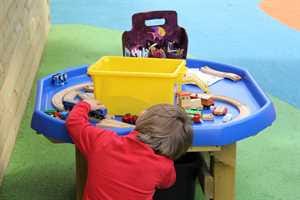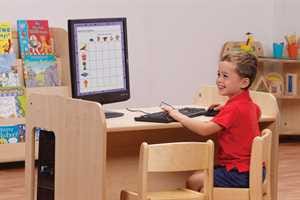
Children's Health
How Art Therapy Can Support Children’s Emotional Development
What is Art Therapy?
“Art Therapy is an established form of psychological therapy delivered by trained art therapists/art psychotherapists. It’s designed to help anyone, including those whose life has been affected by adverse experiences, illness or disability, by supporting their social, emotional and mental health needs.” www.baat.org
Art Therapy uses art activities, artwork created in therapy, and third-party artwork to encourage people in therapy to develop:
- self-awareness
- look at their emotions
- focus on unanswered emotional disagreements
- enhance social skills
- boost self-esteem
The main aim of Art Therapy is to help people who are emotionally and psychologically frail to attain a better standard of personal, social and emotional development to help their well-being and aid their everyday lives.

>History of Art Therapy
For thousands of years art and crafts have been used throughout cultures and religions as: carved idols, charms, paintings, symbols and for healing.
Yet, Art Therapy only got acknowledgement in the mid-20th century. The formation and growth of Art Therapy as a profession evolved autonomously and concurrently in Europe and in the USA.
In 1942 Adrian Hill, a British artist started to use the term “Art Therapy” as a psychological theory. He uncovered the health benefits of art therapy activities such as drawing and painting for patients recovering from tuberculosis.
Other professionals in the mental health field in the 1940s were also discovering the health benefits of Art Therapy and Creative Therapies and recording their findings.
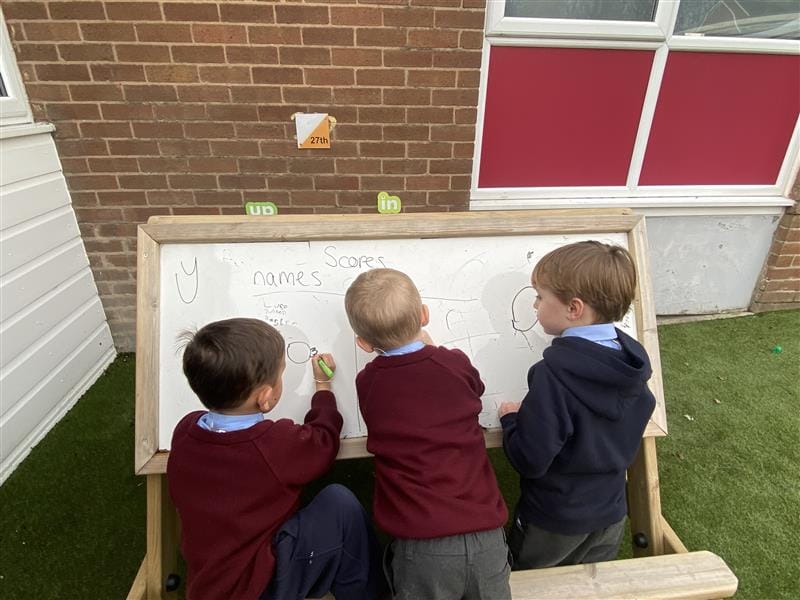
There were five influential writers of the time who then became professional art therapists: Margaret Naumburg, Hanna Kwaitkowska, Florence Cane, Edith Kramer, and Elinor Ulman.
All of whom made significant input regarding the advancement of Art Therapy as a recognised subject and helping people’s learning needs and mental health problems.
Whereas Adrian Hill is seen as the British pioneer for Art Therapy, it is Margaret Naumburg who is seen as the “mother” and “founder” of Art Therapy in the USA.
She believed that children who were allowed self expression through art therapy activities and creative therapies, and study topics of interest would flourish and improve children’s development and mental health problems.
.jpg)
Backed by psychoanalysis, Naumburg believed that creative expression in the form of art projects, was equal to verbal expression and therefore allowing stifled, unconscious thoughts and emotions to flow.
Naumburg deemed that once a person could express their thought processes creatively with the aid of cognitive and verbal expression, that person would be able to heal.
Art Therapy therefore provides the perfect platform for self expression and healing. Art Therapy (goodtherapy.org)
Professional art therapist Kramer believed “art can be therapy” by looking closely at the actual art making process and the sublimation of the defence mechanism which is from Freud’s personality theory, Kramer (1993).
Kramer used art therapy ideas such as arts and crafts as therapy in educational settings as well as incorporating it into therapeutic schools.
Cane, being an art educator encouraged free creative and emotional self expression to enhance learning needs. And finally, Ulman was the first person to create an art journal about “Art Therapy” in the USA to develop childrens' expressive arts, art skills, and for personal insight, as well as creating the first Art Therapy training course.
The Science Behind Art Therapy
Malchiodi (2012) states that neuroscience progressively shows the significance of the arts for both cognitive and emotional development. Kaufman (2013) supports this statement by saying that the creative process of art-making stimulates numerous areas of the brain.
Therefore, by triggering different areas of the brain, Art Therapy is said to aid exercising the whole brain, promote brain plasticity, develop cognitive function and support healthy brain function.
“The tactile nature of different Art Therapy materials and the kinaesthetic processes of creating and embodying art, can provide important opportunities for sensory integration.” Hass-Cohen (2008).
Art Therapy uses different types of sensory materials to aid personal, social and emotional development during sessions. Different Art Therapy activities from painting, moulding, playing, speaking and gesturing, can stimulate different sensory modes which can help with people’s positive psychology, emotions, cognitive thinking, communication and social skill, and self-esteem.
.jpg)
For people with high stress levels and therefore high cortisol levels (the hormone produced when people are stressed) Art Therapy activities reduces it. “Studies have demonstrated the stress- relieving effects of art-making, showing reduced cortisol levels after 45 minutes of engagement with the arts.” Kaimal et al. (2016).
Emotions play a huge part in people’s cognitive functioning. By providing a nurturing and enriched environment for people’s learning needs, the Art Therapist is helping them to study, improve their neural growth and promote self-development.
Art Therapy and Art Therapy activities help people and children to self-regulate and develop coping skills through breathing, movement, and understand their emotions whilst at the same time control and navigate their behaviour and have some self acceptance.
All essential skills to use in their every day lives to help with their personal, social and emotional development.
.jpg)
The Benefits of Art Therapy
Art Therapy via an Art Therapist can help everyone by:
- improving communication
- concentration
- reducing the feeling of loneliness
- enhancing self-esteem
- promoting confidence
- improving self-awareness
Art Therapy encourage people to express themselves creatively by creating art rather than through speech. Therefore, it is very beneficial for people who cannot express their feelings or emotions to use visual representations.
It is also a useful tool for people who find it hard to talk (via talk therapy) about and remember uncomfortable experiences.
Art Therapy using an Art Therapist can be used to help people with the following conditions:
- anxiety
- depression
- stress
- post traumatic stress disorder
- substance dependency
- ADHA
- cancer
- heart Disease
- old age issues
- compassion fatigue
- anorexia
- bulimia
- other eating disorders
- cognitive impairments
- family/relationship issues
What Are The Four Types Of Art Therapy?
Art Therapy is an form of expressive and creative therapy that uses creative process of art making improve a person's social and emotional well being as well as their physical and mental well being.
There are four key types of Art Therapy:
- Drawing/Painting: This involves using different drawing tools such as pencils, crayons, pastels, or paint to express themselves visually instead of verbally where they might find it hard to articulate their thoughts and words.
- Sculpting/Modelling: Working with malleable materials such as clay or play dough can aid individuals to work with these materials to form objects that reflect their emotions. This can be very therapeutic.
- Collage: Using different materials to form a collage such as fabrics, photos, magazine clippings, ribbons, silver foils etc. develops self awareness and promotes the exploration of complex feelings and thoughts through putting together a mixture of different images and texture to form a finished piece of art.
- Construction/Assemblage: Using objects that have been found. Individuals can use anything from building blocks, spaghetti, sting or toilet rolls to build an object that represents their internal state or any external experiences they have lived.
All of these Art Therapy methods provide a unique way for children and adults to explore and express their emotions which can be tailored to suit their requirements and therapeutic needs.
The Benefits of Art Therapy for Children
“Often it can be difficult for children and young people to put some things into words and so having art as an additional tool enables that communication and expression to still take place and worked through in a creative way.” Art Therapy: How it works and helps children (theislandyork.org)
Research suggests that children are introduced to Art Therapy when they are unable to live a fulfilling life or reach their potential. Art Therapy provides the right environment to help children explore what is holding them back, help them regain their confidence and improve mental health problems.
Children that will benefit from Art Therapy will have a range of different issues including:
- emotional and behavioural issues
- mental health issues
- learning struggles
- bereavement
- trauma
- other problems
Art Therapy sessions are unique to each child. The aim of the sessions when they create art are to:
- improve cognitive performance
- advance problem solving skills
- promote self-awareness
- reduce anxiety
- relieve stress
- aid emotional and behavioural issues
- give children a voice
- provide a skill to help a child cope
- provide a safe environment for the child
By providing a creative environment for the children, they can use different artistic methods to create art, look at the meaning of it with their Art Therapist, and use a wide range of materials in the process to produce a final piece of art work.

However, the final piece of artwork although important isn’t the most important part of Art Therapy. The creative process of getting to the final product is the most important for finding key information about their inner world, and having a greater understanding into the children’s lives.
There are different development stages to Art Therapy that encourages children to investigate, take risks, (there is no right or wrong way) use a wide range of different media and techniques which can then be taken outside of the therapy session and used in their every day lives.
Reconfirming to the children that taking risks is OK, making mistakes is OK and that they have to trust in themselves.
“In children’s Art Therapy, the Art Therapist has specific training and communicates while the child participates in the creative process… The Therapist may or may not ask about the child’s specific artwork but will almost always initiate conversation as a for of talk therapy.
Typically, both artmaking and conversing with the Art Therapist will happen in each children’s art therapy class.” Children’s Art Therapy: Everything You Need to Know - Blossom Children's Center (blossomchildrenscenter.com)
An important part of Art Therapy is building the bond between therapist (the trained professional), and student. By doing so, this will improve children’s social skills and emotional state, as well as modelling how to form positive relationships for life outside of the therapy sessions.
Ramos-Saenz (2019) states that the Art Therapist/child relationship in particular is important for children who are in Foster Care who find it hard to express themselves safely, have concerns or are struggling emotionally.
Art Therapy can also aid children who are orphaned or have only one parent. Promoting a bond between Art Therapist and child can be very beneficial. “Working with an adult can be a form of building a strong relationship and mentor which children without parents lack.” Machiodi (2016)
Product Spotlight
Being in a safe space and being able to confide in an Art Therapist will enable children to work through their inner turmoil.
Art Therapy provides the right creative safe space for children’s learning needs and encourages them to visually express and unload their feelings in a tangible form that we can see and touch.
During creative activities (such as drawing or painting), and once a piece of artwork has been created, the Art Therapist and children engage in conversation and explore ways to help make them less self conscious, release their trauma, allow it to be processed to bring awareness and reiterate to children that the trauma is in the past.
By allowing children to be creative through art activities and self exploration, you are providing an environment where they are in control of:
- the traumatic event
- their thoughts
- their emotions
- their self-worth
Benefits of Art Therapy for Vulnerable Children and Young Children In The Long-Term
Studies have shown that Art Therapy is perceived by children as an enjoyable therapy. Each child will take home something different from their creative activity sessions, depending on their involvement in the sessions and where they are currently. It can help children in the long-term by:
- improving their communication skills
- enhancing their concentration
- improving their self-awareness
- understanding the world around them more
- improving their self-regulation
- improving their behaviour
- developing coping strategies
- promoting positive relationships
Benefits of Art Therapy for Children with SEN
Children with SEN often have low self-esteem and self image, feel isolated and have behavioural issues due to communication, learning and social difficulties in their everyday lives.
Art Therapy can help SEN children by linking their inner thought processes with the outside world, allowing them to convey their emotions in a safe environment with a trained Arts Therapist and experience happy moments.
As discussed, Art Therapists can help children (in this case SEN children) via arts and crafts to understand, label and stabilise their emotions as well as helping them to understand social and cultural norms.
Art Therapists can help SEN children by:
- improving their self-esteem
- assisting the child’s mentalization processes
- helping children to develop coping mechanisms
- helping children with trauma
- helping children with social and group skills
- developing frustration acceptance
- provisioning for sensory incorporation
- developing children’s internal control levels
- developing self-regulation
- helping SEN children to work with other children, teachers and family members dues to their behavioural issues
Art Therapy can help SEN children by providing an emotional vehicle for them to express themselves through art activities and visual representation.
Whilst at the same time, with the help of the Art Therapist, communicate their perception of their work/world and be understood. Therefore, supporting children with SEN to find their voice.

Art Therapy Activities
Have a look at our top 3 art therapy ideas that are guaranteed to get your kids engaged with art, whilst recieving the benefits of the topic.
1. Create Mandalas/Rangoli Patterns
A calming, focus enhancing Art Therapy session to help children’s development and that teachers can incorporate into their lessons, is drawing figures with repeated patterns like mandalas.
This could be done using different mixed media e.g. finger painting, paint brushes, colouring pens, coloured sand or by using different coloured chalk...
Art Therapy such as drawing repeated patterns helps children regulate their emotions and nervous system. A perfect time to do this is when teaching children about the Hindu festival of Diwali and asking the children to create their own rangoli patterns.
You could even give your children colouring sheets or a colouring book that contain these patterns and have a colouring session outside. This technique is really effective for combatting exam stress in children.
Pentagon Play have numerous products that teachers can use to help children design their rangoli patterns and have a visual representation…
From Sand Boxes…
Children can use different coloured sand to design their rangoli repeating patterns within one of Pentagon’s numerous Sand Pits. Creating a multi-sensory workspace for children to deal with their emotions, improve their cognitive thinking and reduce their stress levels.
To Chalkboards…
- Giant Chalkboard
- Interactive Chalkboard Panel on Wheels
- Picnic Table with Chalkboard Top
- Performance Stage with Chalkboard
- Easel Table
- Giant Playhouse
Children can work individually or in groups to create their rangoli patterns on Pentagon Play’s Chalkboard range.
By working in groups and having group members to create a rangoli pattern, children will build their confidence, social skills and self-esteem all in a safe environment. Perfect for children’s personal, social and emotional development!
From Sand Boxes…
- Sand Table on Wheels
- Sand Table with Lid
- Covered Sand Box
Children can use different coloured sand to design their rangoli repeating patterns within one of Pentagon’s numerous Sand Pits. Creating a multi-sensory workspace for children to deal with their emotions, improve their cognitive thinking and reduce their stress levels.
To Chalkboards…
- Giant Chalkboard
- Interactive Chalkboard Panel on Wheels
- Picnic Table with Chalkboard Top
- Performance Stage with Chalkboard
- Easel Table
- Giant Playhouse
Children can work individually or in groups to create their rangoli patterns on Pentagon Play’s Chalkboard range. By working in groups to create a rangoli pattern, children will build their confidence, social skills and self-esteem all in a safe environment. Perfect for children’s personal, social and emotional development!
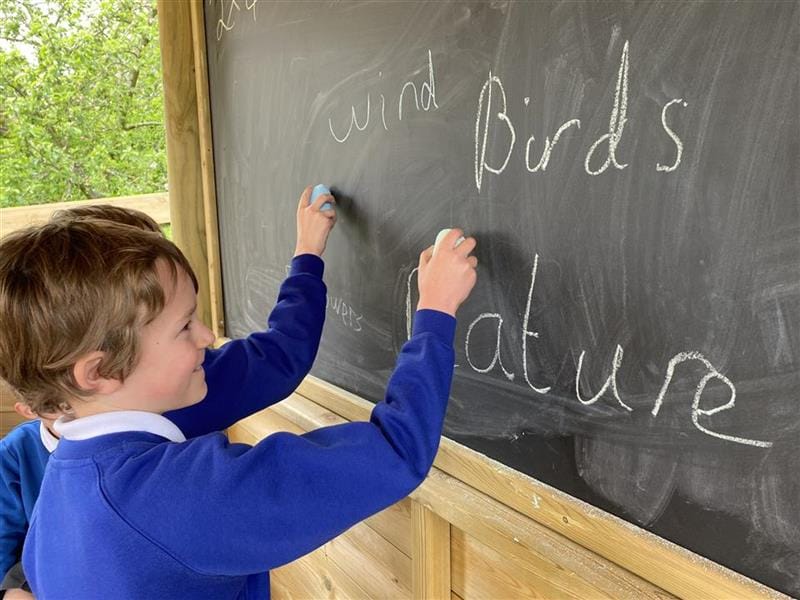
2. Body Tracing
Body tracing is a great way to connect with your children and their learning needs. Especially those who have a history of trauma, relationship difficulties with their loved ones or self-image issues.
By doing a body tracing activity with children you can provided positive reinforcement to those children in need. While at the same time encouraging children in a group to be positive about their piers and themselves.
This arts and crafts session would be a perfect PSHE lesson encouraging children to think about others, their well being and feelings, and being a good friend by using a visual representation.
.jpg)
Pentagon Play’s Giant or Small Playhouses are perfect for children to draw around their bodies, having a floor to ceiling chalkboard as the interior wall. Adults and children can take it in turn to be the drawer or have their bodies drawn.
Once the body has been traced around move away and ask the children to write (using chalk) and begin exploring positive words about yourself. As the adult you too must write positive words about yourself on the tracing.
Modelling positive self-esteem and confidence in finding positives about yourself to the children and helping the children’s development. The children can use the Giant or Small Playhouse benches to sit on during this activity to discuss the positive words amongst themselves.
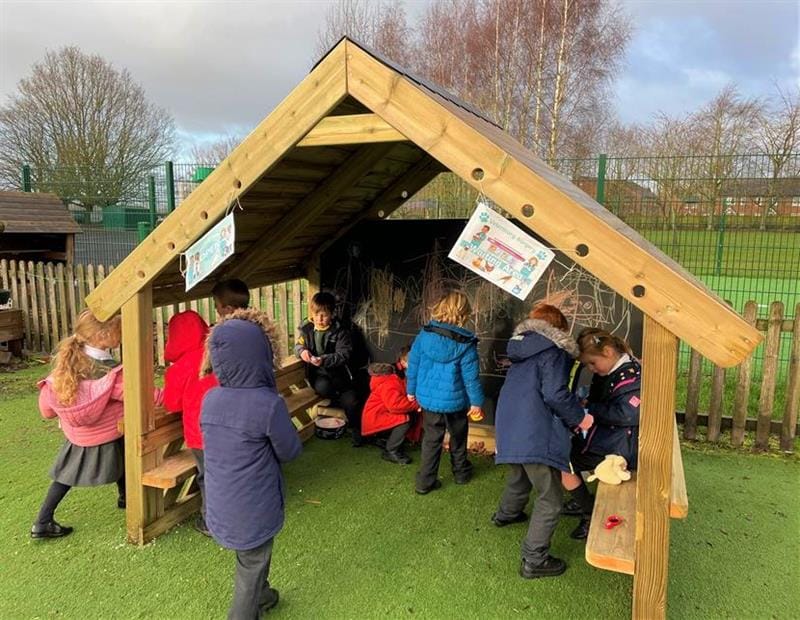
Once done ask the children to work in groups to do the same about themselves. Keep in mind that some children will be OK with the closeness of the chalk around their bodies, whilst others may not be due to issues at home.
For those children, work directly with them either on a one to one or in a little group making sure that you trace more widely around their bodies so that the chalk doesn’t come in contact with the child and helping with their learning needs. When drawing around them, make sure to engage in eye contact and be positive with them.
Again, let the children write positive words/statements about themselves and their friends in the bodies. At the end of the exercise let the children read out all the positive statements that their friends and themselves have said.
You will see that the children will be beaming as their friends read out all the positive words about themselves helping them with their learning needs! A wonderful activity to improve children’s development in self-esteem, self-awareness, confidence, communication and group work. Within the safe walls of the Giant and Small Playhouses!
.jpg)
3. Collages
Creative arts such as designing collages is a great therapeutic exercise to do with children. It promotes creative expression by being sensory, by touching and handling different material and textures (soft, hard, ridged, scratchy, smooth) and therefore being a comfort.
It also promotes children’s development to be creative by putting materials together in a new and unique way, which promotes cognitive functioning and calmness.

Collages can be a great medium for Art Therapy by suing different materials their comforting textures can be used to help manage exploration of uncomfortable emotions.
Collages can be used for any arts and crafts related/cross-curricular lesson. For example they can be used in numerous Topic areas such as: Carnival of animals, Local studies – our school and local area, Beyond living memory – commemorating history…
Taking the Topic of carnival of animals, children can be asked to create a jungle animal collage. Children can pick 1 animal that they find fascinating. Whilst creating the animal ask the children to think about:
- why they chose this animal?
- what qualities do they see in the animal that they also see in themselves or would like to see in themselves?
- what qualities do they see in the animal that they see in themselves that they don’t want to see or would like to change?
By talking throughout the process, children can use their imagination, expand their cognitive thinking, improve their focus and reduce their anxiety by talking about their strengths and weaknesses and how to resolve them.
.jpg)
Pentagon Play’s Construction Table is the perfect arts and crafts resource to help children create their collages. Having 3 stainless steel bowls, a large counter space next to them and shelving, the children can use the Construction Table to select, cut, stick and create all in the same space.
Having 3 different bowls incorporated into the Construction Table allows the teacher to put a wide range of different collage materials in them for the children to choose from for example: pictures or photographs, ribbons, different coloured paper, pipe cleaners, images from magazines, fabric, paper bag, silver foil, bottle tops, food labels, flowers, leaves, twigs etc.
You can use anything you want to! As well as pots of glue and scissors to stick and cut and different drawing tools too! The great thing about collage work as an Art Therapy is that everyone of all abilities can do it. All you need to do is open your imagination and get sticking!
For more information on Pentagon Play’s arts and crafts products click on the link below www.pentagonplay.co.uk to enhance your children’s creativity!
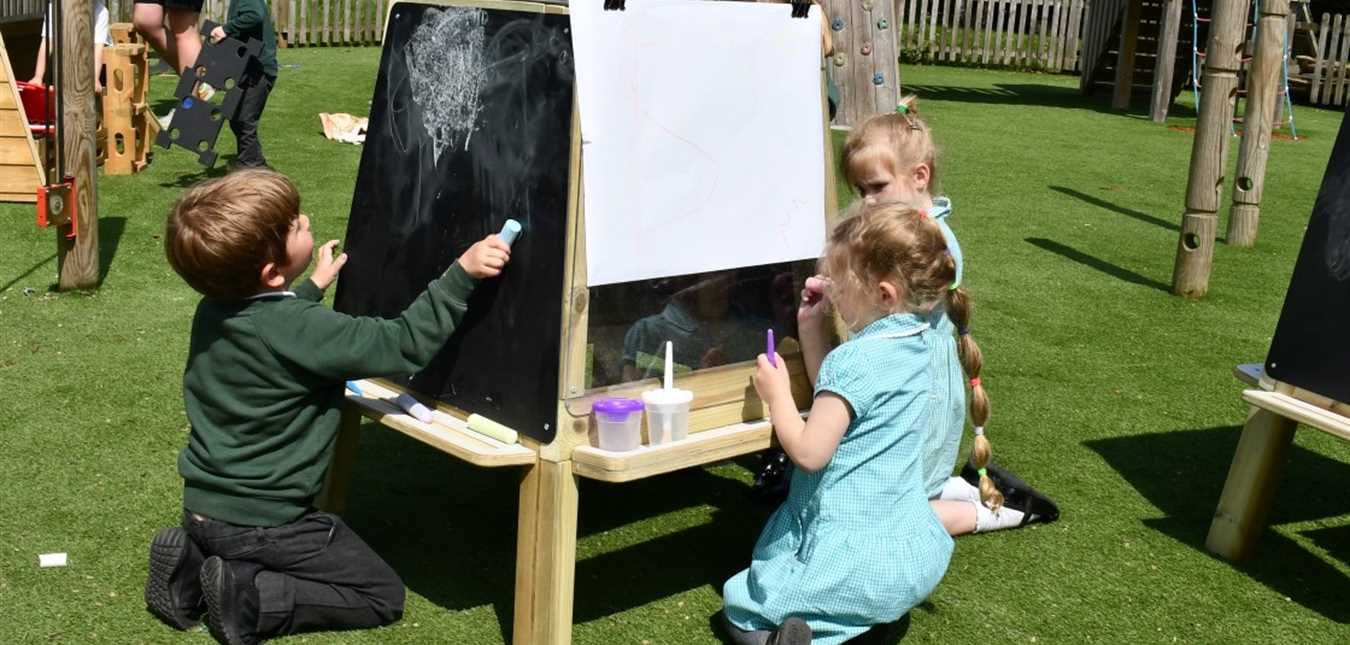
.JPG)
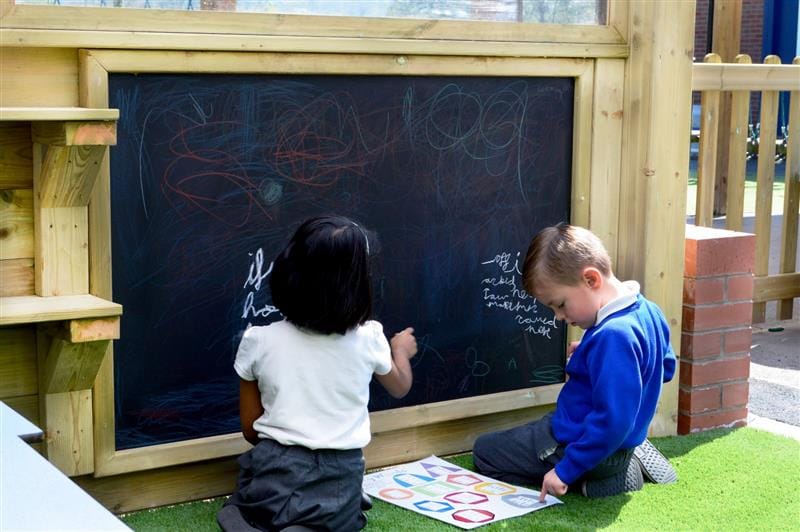
.JPG)

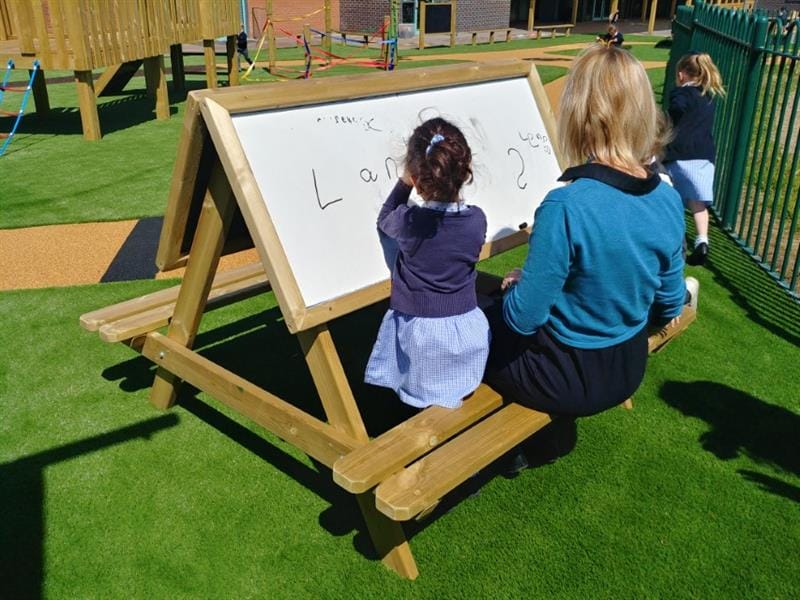




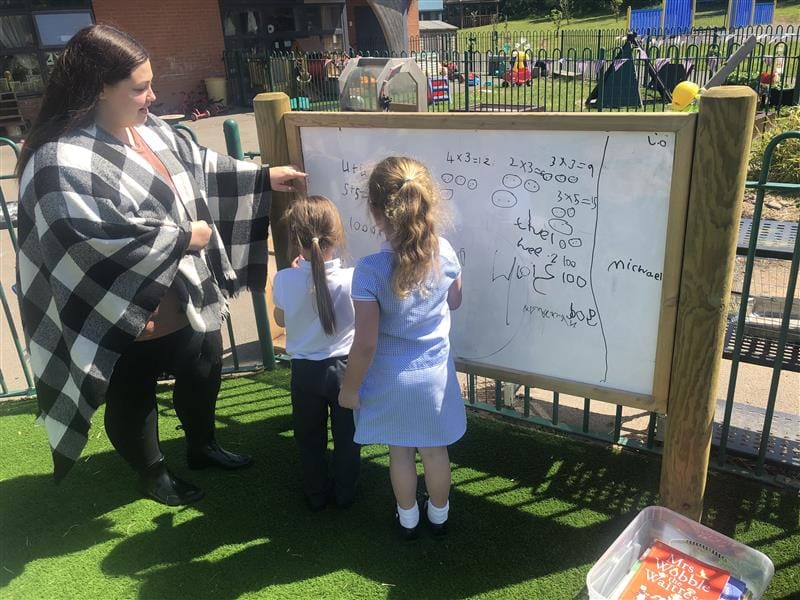
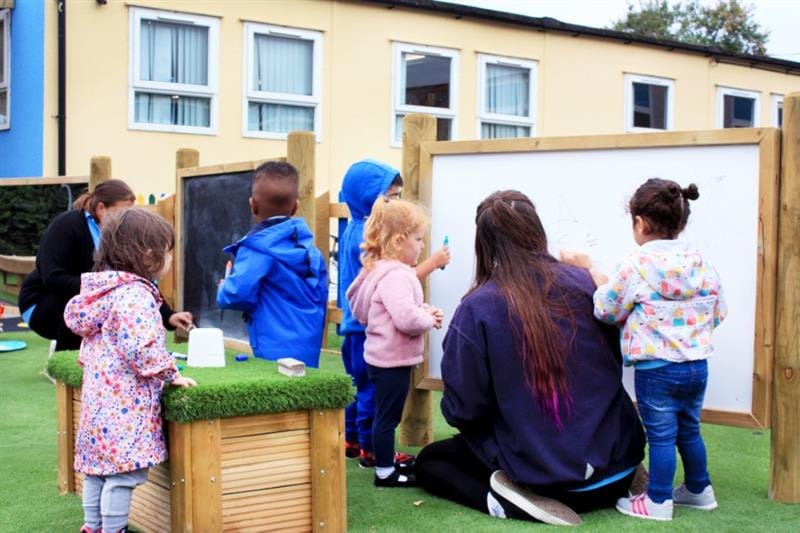
.jpg)
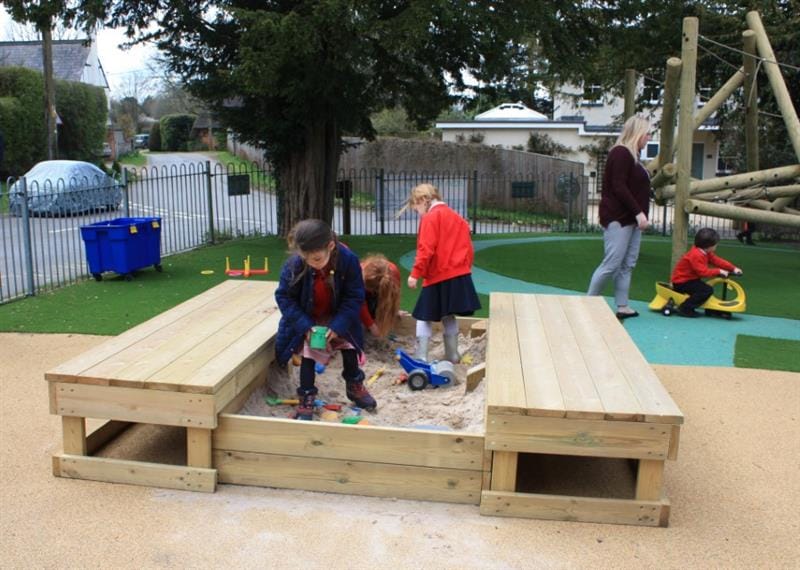
.JPG)
.JPG)


